Host: Fraser Cain (@fcain)
Guests:
Morgan Rehnberg (cosmicchatter.org / @MorganRehnberg )
Continue reading “Weekly Space Hangout – February 27, 2015: In Memory of Leonard Nimoy”
Host: Fraser Cain (@fcain)
Guests:
Morgan Rehnberg (cosmicchatter.org / @MorganRehnberg )
Continue reading “Weekly Space Hangout – February 27, 2015: In Memory of Leonard Nimoy”

The Obama Administration today (Feb. 2) proposed a NASA budget allocation of $18.5 Billion for the new Fiscal Year 2016, which amounts to a half-billion dollar increase over the enacted budget for FY 2015, and keeps the key manned capsule and heavy lift rocket programs on track to launch humans to deep space in the next decade and significantly supplements the commercial crew initiative to send our astronauts to low Earth orbit and the space station later this decade.
NASA Administrator Charles Bolden formally announced the rollout of NASA’s FY 2016 budget request today during a “state of the agency” address at the Kennedy Space Center (KSC), back dropped by the three vehicles at the core of the agency’s human spaceflight exploration strategy; Orion, the Boeing CST-100 and the SpaceX Dragon.
“To further advance these plans and keep on moving forward on our journey to Mars, President Obama today is proposing an FY 2016 budget of $18.5 billion for NASA, building on the significant investments the administration has made in America’s space program over the past six years,” Administrator Bolden said to NASA workers and the media gathered at the KSC facility where Orion is being manufactured.
“These vehicles are not things just on paper anymore! This is tangible evidence of what you [NASA] have been doing these past few years.”
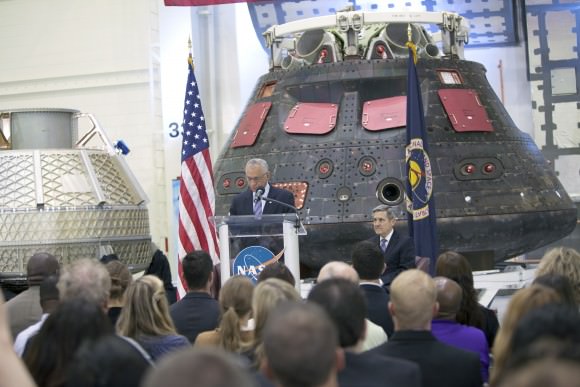
Bolden said the $18.5 Billion budget request will enable the continuation of core elements of NASA’s main programs including first launch of the new commercial crew vehicles to orbit in 2017, maintaining the Orion capsule and the Space Launch System (SLS) rocket to further NASA’s initiative to send ‘Humans to Mars’ in the 2030s, extending the International Space Station (ISS) into the next decade, and launching the James Webb Space Telescope in 2018. JWST is the long awaited successor to NASA’s Hubble Space Telescope.
“NASA is firmly on a journey to Mars. Make no mistake, this journey will help guide and define our generation.”
Funding is also provided to enable the manned Asteroid Redirect Mission (ARM) by around 2025, to continue development of the next Mars rover, and to continue formulation studies of a robotic mission to Jupiter’s icy moon Europa.
“That’s a half billion-dollar increase over last year’s enacted budget, and it is a clear vote of confidence in you – the employees of NASA – and the ambitious exploration program you are executing,” said Bolden.
Overall the additional $500 million for FY 2016 translates to a 2.7% increase over FY 2015. That compares to about a 6.4% proposed boost for the overall US Federal Budget amounting to $4 Trillion.
The Boeing CST-100 and the SpaceX Dragon V2 will restore the US capability to ferry astronauts to and from the International Space Station (ISS).
In September 2014, Bolden announced the selections of Boeing and SpaceX to continue development and certification of their proposed spaceships under NASA’s Commercial Crew Program (CCP) and Launch America initiative started back in 2010.
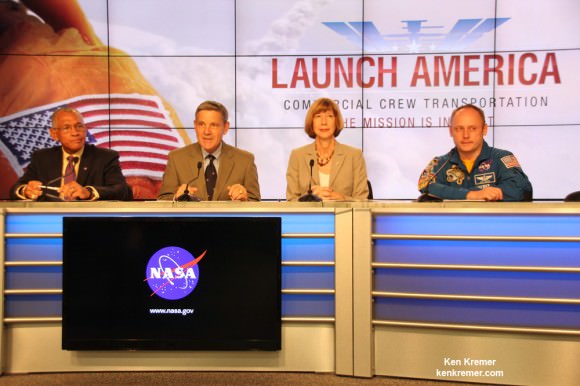
Since the retirement of the Space Shuttle program in 2011, all NASA astronauts have been totally dependent on Russia and their Soyuz capsule as the sole source provider for seats to the ISS.
“The commercial crew vehicles are absolutely critical to our journey to Mars, absolutely critical. SpaceX and Boeing have set up operations here on the Space Coast, bringing jobs, energy and excitement about the future with them. They will increase crew safety and drive down costs.”
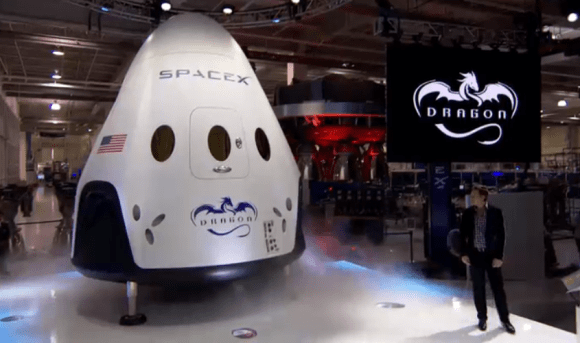
CCP gets a hefty and needed increase from $805 Million in FY 2015 to $1.244 Billion in FY 2016.
To date the Congress has not fully funded the Administration’s CCP funding requests, since its inception in 2010.
The significant budget slashes amounting to 50% or more by Congress, have forced NASA to delay the first commercial crew flights of the private ‘space taxis’ from 2015 to 2017.
As a result, NASA has also been forced to continue paying the Russians for crew flights aboard the Soyuz that now cost over $70 million each under the latest contract signed with Roscosmos, the Russian Federal Space Agency.
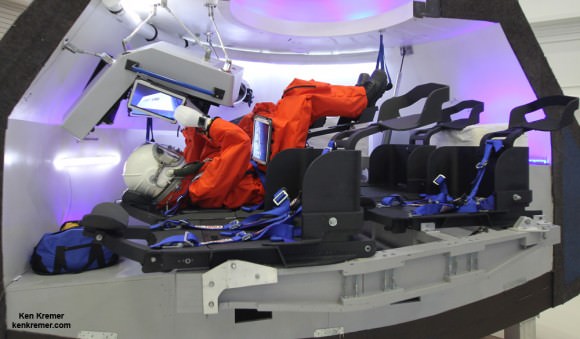
Bolden has repeatedly stated that NASA’s overriding goal is to send astronauts to Mars in the 2030s.
To accomplish the ‘Journey to Mars’ NASA is developing the Orion deep space crew capsule and mammoth SLS rocket.
However, both programs had their budgets cut in the FY 2016 proposal compared to FY 2015. The 2015 combined total of $3.245 Billion is reduced in 2016 to $2.863 Billion, or over 10%.
The first test flight of an unmanned Orion atop the SLS is now slated for liftoff on Nov. 2018, following NASA’s announcement of a launch delay from the prior target of December 2017.
Since the Journey to Mars goal is already underfunded, significant cuts will hinder progress.
Orion just completed its nearly flawless maiden unmanned test flight in December 2014 on the Exploration Flight Test-1 (EFT-1) mission.

There are some losers in the new budget as well.
Rather incomprehensibly funding for the long lived Opportunity Mars Exploration Rover is zeroed out in 2016.
This comes despite the fact that the renowned robot just reached the summit of a Martian mountain at Cape Tribulation and is now less than 200 meters from a science goldmine of water altered minerals.

Funding for the Lunar Reconnaissance Orbiter (LRO) is also zeroed out in FY 2016.
Both missions continue to function quite well with very valuable science returns. They were also zeroed out in FY 2015 but received continued funding after a senior level science review.
So their ultimate fate is unknown at this time.
Overall, Bolden was very upbeat about NASA’s future.
“I can unequivocally say that the state of NASA is strong,” Bolden said.
He concluded his remarks saying:
“Because of the dedication and determination of each and every one of you in our NASA Family, America’s space program is not just alive, it is thriving! Together with our commercial and international partners, academia and entrepreneurs, we’re launching the future. With the continued support of the Administration, the Congress and the American people, we’ll all get there together.”
Stay tuned here for Ken’s continuing Earth and planetary science and human spaceflight news.
Host: Fraser Cain (@fcain)
Special Guest: Andy Weir , author of “The Martian”
Andy was first hired as a programmer for a national laboratory at age fifteen and has been working as a software engineer ever since. He is also a lifelong space nerd and a devoted hobbyist of subjects like relativistic physics, orbital mechanics, and the history of manned spaceflight. “The Martian” is his first novel.
Guests:
Morgan Rehnberg (cosmicchatter.org / @cosmic_chatter)
Ramin Skibba (@raminskibba)
Brian Koberlein (@briankoberlein)
Dave Dickinson (@astroguyz / www.astroguyz.com)
Nicole Gugliucci (cosmoquest.org / @noisyastronomer)
Continue reading “Weekly Space Hangout – Jan 9, 2015: Andy Weir of “The Martian””
Host: Fraser Cain (@fcain)
Guests:
Morgan Rehnberg (cosmicchatter.org / @cosmic_chatter)
Ramin Skibba (@raminskibba)
Continue reading “Weekly Space Hangout – Dec. 5, 2014: Orion’s Successful Launch!”
Host: Fraser Cain (@fcain)
Guests:
Morgan Rehnberg (cosmicchatter.org / @cosmic_chatter)
Brian Koberlein (@briankoberlein)
Ramin Skibba (@raminskibba)
Dave Dickinson (@astroguyz / www.astroguyz.com)
Continue reading “Weekly Space Hangout – Nov. 21, 2014: New Images of Europa”
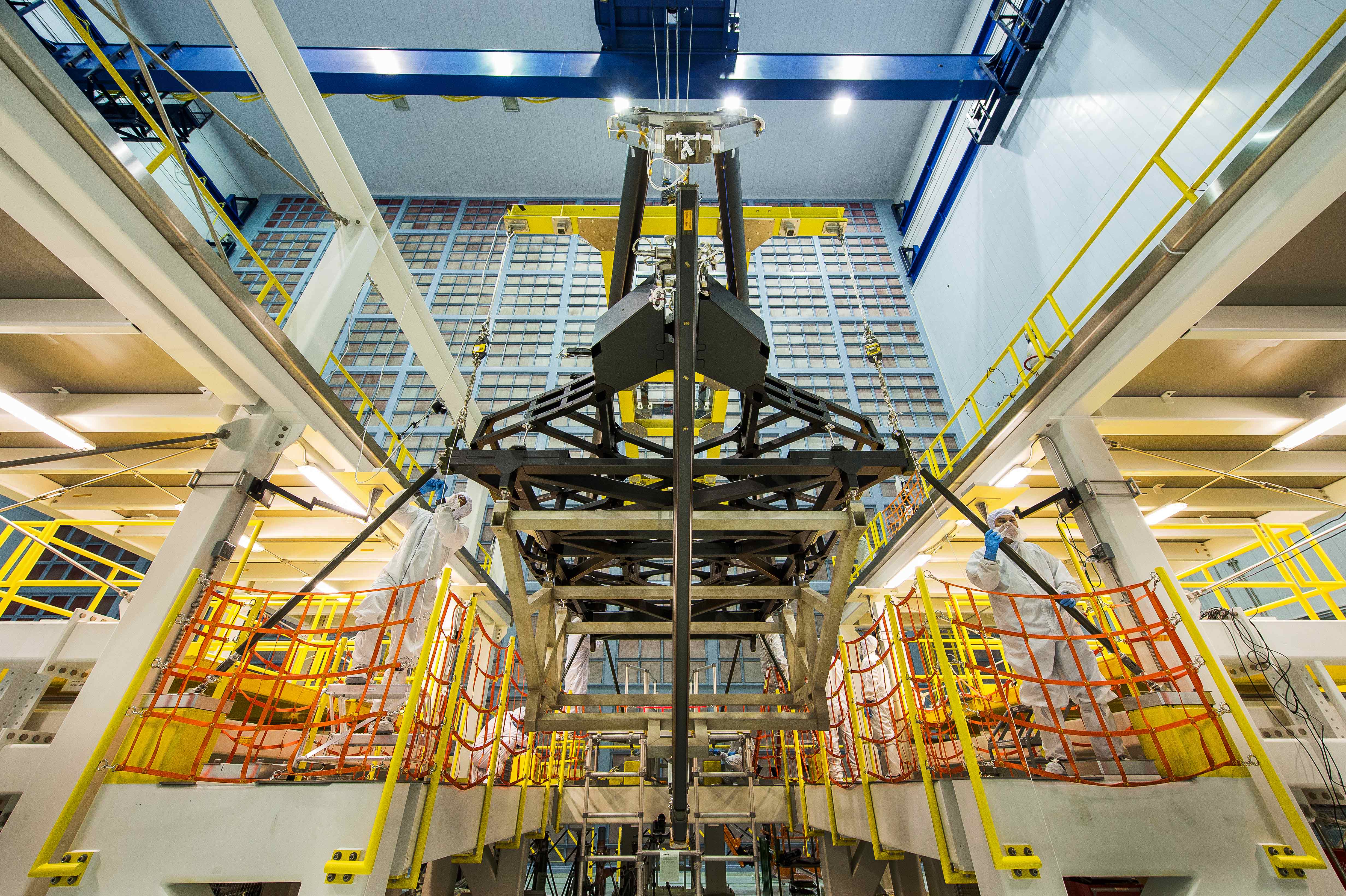
The central piece of the “pathfinder” backplane that will hold all the mirrors for NASA’s James Webb Space Telescope (JWST) has arrived at the agency’s Goddard Space Flight Center in Maryland for critical assembly testing on vital parts of the mammoth telescope.
The pathfinder backplane arrived at Goddard in July and has now been hoisted in place onto a huge assembly stand inside Goddard’s giant cleanroom where many key elements of JWST are being assembled and tested ahead of the launch scheduled for October 2018.
The absolutely essential task of JWST’s backplane is to hold the telescopes 18 segment, 21-foot-diameter primary mirror nearly motionless while floating in the utterly frigid space environment, thereby enabling the telescope to peer out into deep space for precise science gathering measurements never before possible.
Over the next several months, engineers will practice installing two spare primary mirror segments and one spare secondary mirror onto the center part of the backplane.
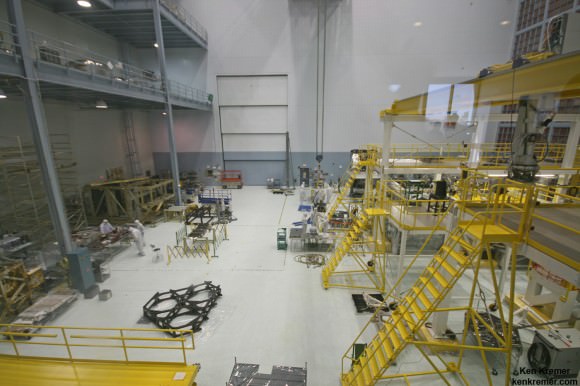
The purpose is to gain invaluable experience practicing the delicate procedures required to precisely install the hexagonal shaped mirrors onto the actual flight backplane unit after it arrives.
The telescopes primary and secondary flight mirrors have already arrived at Goddard.
The mirrors must remained precisely aligned in space in order for JWST to successfully carry out science investigations. While operating at extraordinarily cold temperatures between -406 and -343 degrees Fahrenheit the backplane must not move more than 38 nanometers, approximately 1/1,000 the diameter of a human hair.
The backplane and every other component must function and unfold perfectly and to precise tolerances in space because JWST has not been designed for servicing or repairs by astronaut crews voyaging beyond low-Earth orbit into deep space, William Ochs, Associate Director for JWST at NASA Goddard told me in an interview during a visit to JWST at Goddard.
Watch this video showing movement of the pathfinder backplane into the Goddard cleanroom.
Video Caption: This is a time-lapse video of the center section of the ‘pathfinder’ backplane for NASA’s James Webb Space Telescope being moved into the clean room at NASA’s Goddard Space Flight Center in Greenbelt, Maryland. Credit: NASA/Chris Gunn
The actual flight backplane is comprised of three segments – the main central segment and a pair of outer wing-like parts which will be folded over into launch configuration inside the payload fairing of the Ariane V ECA booster rocket. The telescope will launch from the Guiana Space Center in Kourou, French Guiana in 2018.
Both the backplane flight unit and the pathfinder unit, which consists only of the center part, are being assembled and tested by prime contractor Northrop Grumman in Redondo Beach, California.
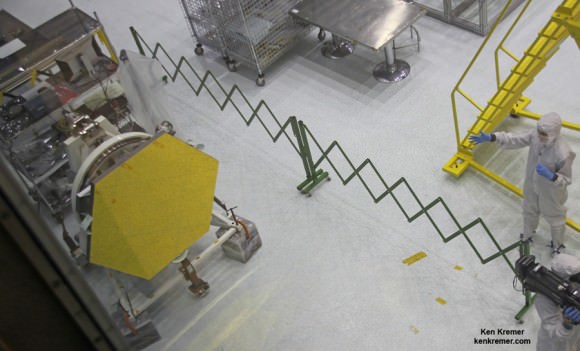
The test unit was then loaded into a C-5, flown to the U.S. Air Force’s Joint Base Andrews in Maryland and unloaded for transport by trailer truck to NASA Goddard in Greenbelt, Maryland.
JWST is the successor to the 24 year old Hubble Space Telescope and will become the most powerful telescope ever sent to space.
Webb is designed to look at the first light of the Universe and will be able to peer back in time to when the first stars and first galaxies were forming.
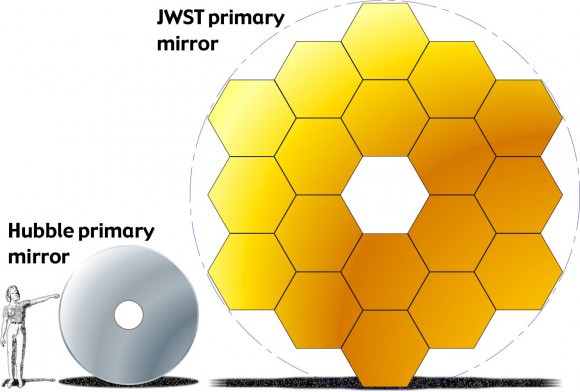
The Webb Telescope is a joint international collaborative project between NASA, the European Space Agency (ESA) and the Canadian Space Agency (CSA).
NASA has overall responsibility and Northrop Grumman is the prime contractor for JWST.
Read my story about the recent unfurling test of JWST’s sunshade – here.
Stay tuned here for Ken’s continuing Earth and Planetary science and human spaceflight news.
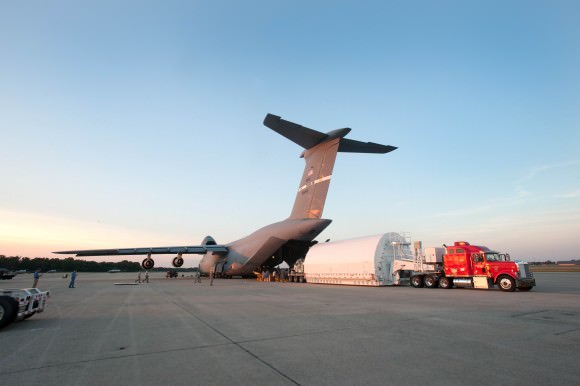
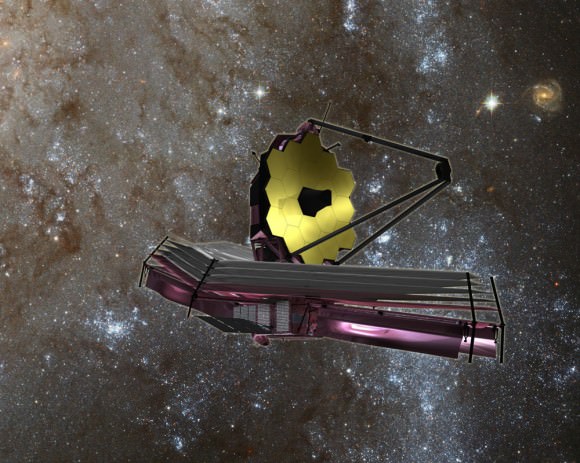
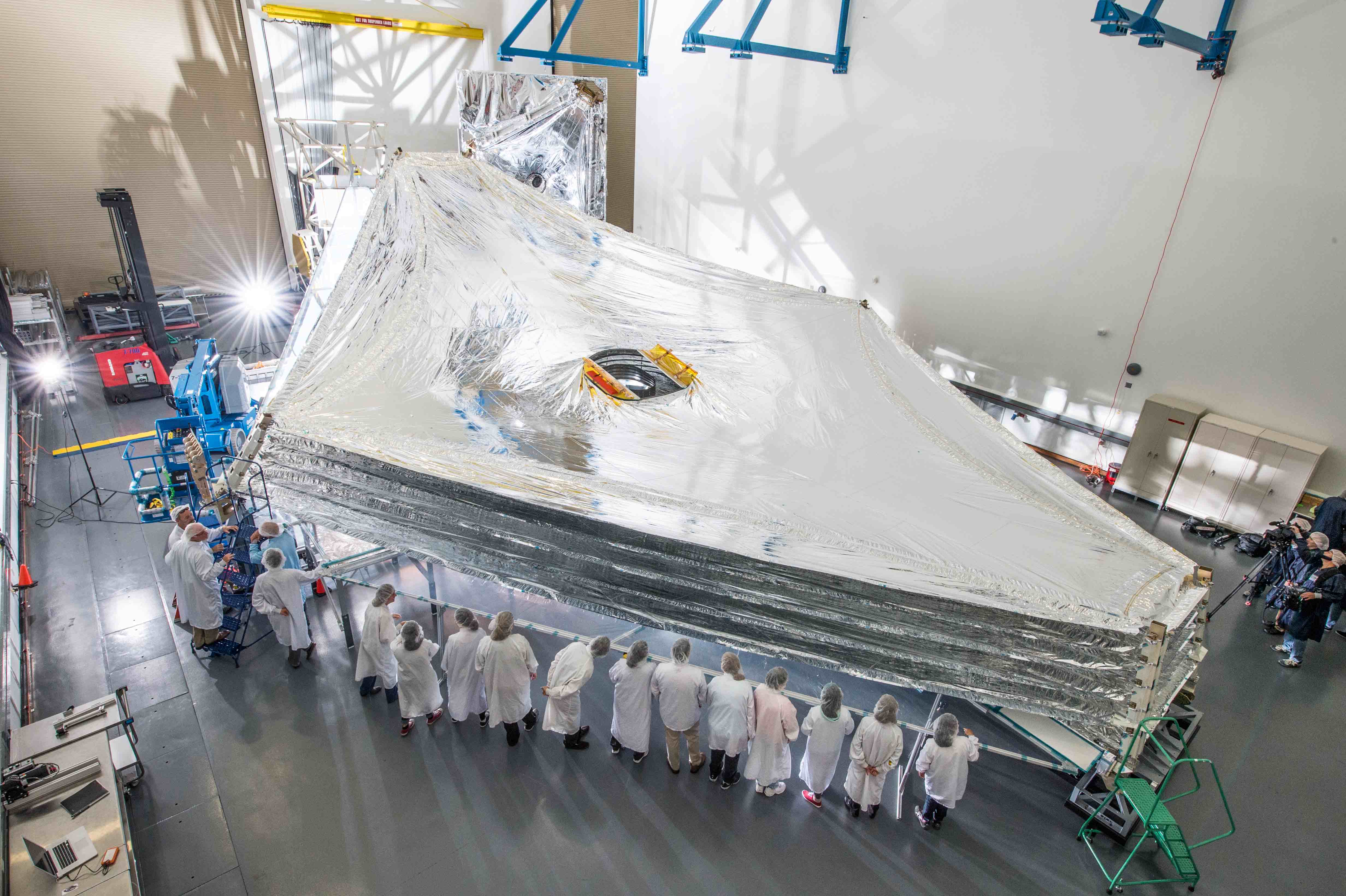
GODDARD SPACE FLIGHT CENTER, MD – The huge Sunshield test unit for NASA’s James Webb Space Telescope (JWST) has been successfully unfurled for the first time in a key milestone ahead of the launch scheduled for October 2018.
Engineers stacked and expanded the tennis-court sized Sunshield test unit last week inside the cleanroom at a Northrop Grumman facility in Redondo Beach, California.
NASA reports that the operation proceeded perfectly the first time during the test of the full-sized unit.
The Sunshield and every other JWST component must unfold perfectly and to precise tolerances in space because it has not been designed for servicing or repairs by astronaut crews voyaging beyond low-Earth orbit into deep space, William Ochs, Associate Director for JWST at NASA Goddard told me in an exclusive interview.

The five layered Sunshield is the largest component of the observatory and acts like a parasol.
Its purpose is to protect Webb from the suns heat and passively cool the telescope and its quartet of sensitive science instruments via permanent shade to approximately 45 kelvins, -380 degrees F, -233 C.
The kite-shaped Sunshield provides an effective sun protection factor or SPF of 1,000,000. By comparison suntan lotion for humans has an SPF of 8 to 40.

The extreme cold is required for the telescope to function in the infrared (IR) wavelengths and enable it to look back in time further than ever before to detect distant objects.
The shield separates the observatory into a warm sun-facing side and a cold anti-sun side.
Its five thin membrane layers also provides a stable thermal environment to keep the telescopes 18 primary mirror segments properly aligned for Webb’s science investigations.
JWST is the successor to the 24 year old Hubble Space Telescope and will become the most powerful telescope ever sent to space.
The Webb Telescope is a joint international collaborative project between NASA, the European Space Agency (ESA) and the Canadian Space Agency (CSA).
NASA has overall responsibility and Northrop Grumman is the prime contractor for JWST.
Webb will launch folded up inside the payload fairing of an ESA Ariane V ECA rocket from the Guiana Space Center in Kourou, French Guiana.
In launch configuration, the Sunshield will surround the main mirrors and instruments like an umbrella.
During the post launch journey to the L2 observing orbit at the second Sun-Earth Lagrange point nearly a million miles (1.5 million Km) from Earth, the telescopes mirrors and sunshield will begin a rather complex six month long unfolding and calibration process.
The science instruments have been mounted inside the ISIM science module and are currently undergoing critical vacuum chamber testing at NASA Goddard Space Flight Center which provides overall management and systems engineering.

The mirror segments have arrived at NASA Goddard where I’ve had the opportunity to observe and report on work in progress.
Stay tuned here for Ken’s continuing JWST, MMS, ISS, Curiosity, Opportunity, SpaceX, Orbital Sciences, Boeing, Orion, MAVEN, MOM, Mars and more Earth and Planetary science and human spaceflight news.
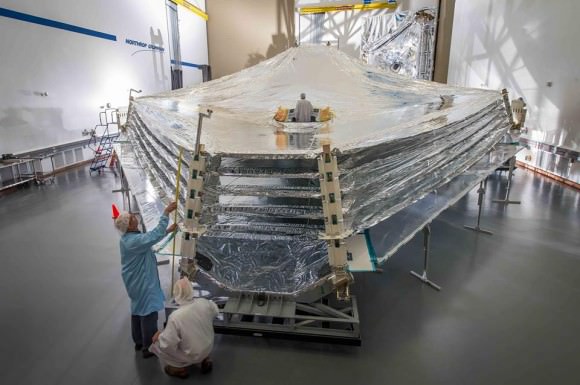
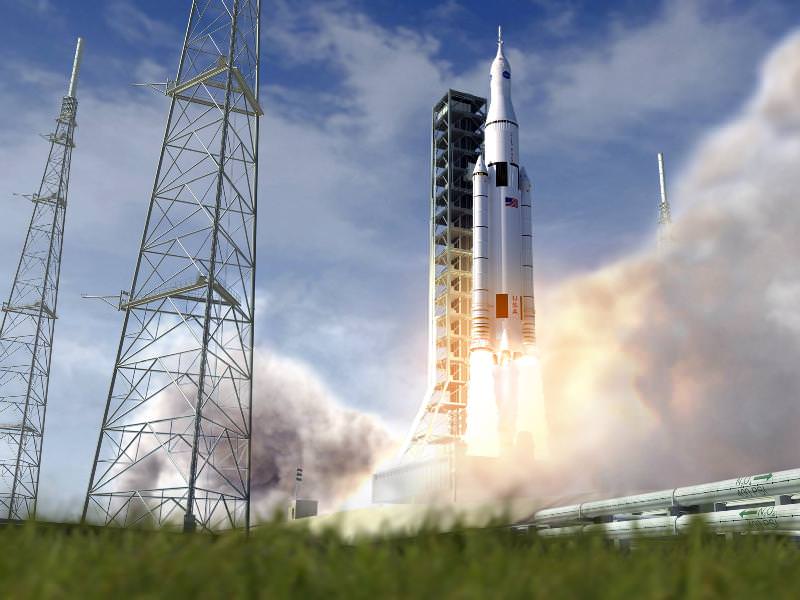
In three years, NASA is planning to light the fuse on a huge rocket designed to bring humans further out into the solar system.
We usually talk about SLS here in the context of the astronauts it will carry inside the Orion spacecraft, which will have its own test flight later in 2014. But today, NASA advertised a possible other use for the rocket: trying to find life beyond Earth.
At a symposium in Washington on the search for life, NASA associate administrator John Grunsfeld said SLS could serve two major functions: launching bigger telescopes, and sending a mission on an express route to Jupiter’s moon Europa.
The James Webb Space Telescope, with a mirror of 6.5 meters (21 feet), will in part search for exoplanets after its launch in 2018. Next-generation telescopes of 10 to 20 meters (33 to 66 feet) could pick out more, if SLS could bring them up into space.
“This will be a multi-generational search,” said Sara Seager, a planetary scientist and physicist at the Massachusetts Institute of Technology. She added that the big challenge is trying to distinguish a planet like Earth from the light of its parent star; the difference between the two is a magnitude of 10 billion. “Our Earth is actually extremely hard to find,” she said.
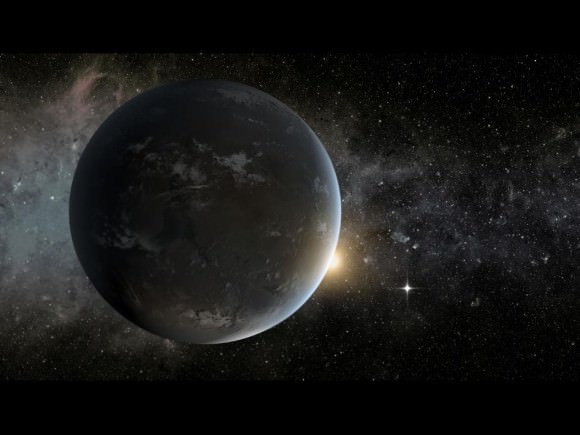
While the symposium was not talking much about life in the solar system, Europa is considered one of the top candidates due to the presence of a possible subsurface ocean beneath its ice. NASA is now seeking ideas for a mission to this moon, following news that water plumes were spotted spewing from the moon’s icy south pole. A mission to Europa would take seven years with the technology currently in NASA’s hands, but the SLS would be powerful enough to speed up the trip to only three years, Grunsfeld said.
And that’s not all that SLS could do. If it does bring astronauts deeper in space as NASA hopes it will, this opens up a range of destinations for them to go to. Usually NASA talks about this in terms of its human asteroid mission, an idea it has been working on and pitching for the past year to a skeptical, budget-conscious Congress.
But in passing, John Mather (NASA’s senior project scientist for Webb) said it’s possible astronauts could be sent to maintain the telescope. Webb is supposed to be parked in a Lagrange point (gravitationally stable location) in the exact opposite direction of the sun, almost a million miles away. It’s a big contrast to the Hubble Space Telescope, which was conveniently parked in low Earth orbit for astronauts to fix every so often with the space shuttle.
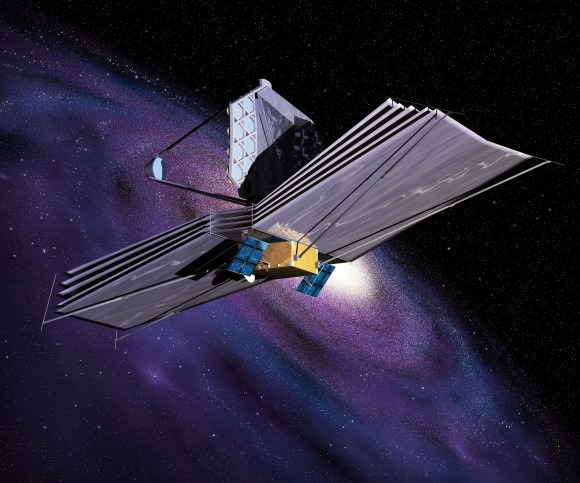
While NASA works on the funding and design for larger telescope mirrors, Webb is one of the two new space telescopes it is focusing on in the search for life. Webb’s infrared eyes will be able to peer at solar systems being born, once it is launched in 2018. Complementary to that will be the Transiting Exoplanet Survey Satellite, which will fly in 2017 and examine planets that pass in front of their parent stars to find elements in their atmospheres.
The usual cautions apply when talking about this article: NASA is talking about several missions under development, and it is unclear yet what the success of SLS or any of these will be until they are battle-tested in space.
But what this discussion does show is the agency is trying to find many purposes for its next-generation rocket, and working to align it to astrophysics goals as well as its desire to send humans further out in the solar system.
During a hearing last week before the U.S. House Science and Technology Committee SETI scientists Seth Shostak and Dan Werthimer asserted that solid evidence for extraterrestrial life in our galaxy — or, at the very least, solid evidence for a definitive lack of it — will come within the next two decades. It’s a bold claim for scientists to make on public record, but one that Shostak has made many times before (and he’s not particularly off-schedule either.) And with SETI’s Allen Telescope Array (ATA) continually scanning the sky for any signals that appear intentional, exoplanets being discovered en masse, and new technology on deck that can further investigate a select few of their (hopefully) Earth-like atmospheres, the chances that alien life — if it’s out there — will be found are getting better and better each year.
Would you put your bet on E.T. being out there? Actually, you can.
Thanks to the internet and the apparently incorrigible human need to compete you can actually place a wager on when alien life will be discovered, via an Irish online betting site.
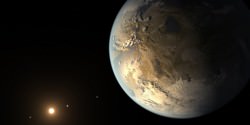
Typically focused on the results of international sporting matches, PaddyPower.com has also included the announcement of extraterrestrial life in its novelty bet section, hinging on “the sitting President of the USA making a statement confirming without doubt the existence of alternative life beings from another planet.” The odds of such an announcement being made in the years 2015-2018 are currently listed at 100 to one. After that they drop significantly… probably because by then the JWST will be in operation and we will “have the technology.” Stranieri.com also has offered a chance for Italian players of chance to bet on the sitting president discussing life from other planets, with betting open until 2025 for long-term gamblers!
Of course, whether you personally would place a wager on such things is purely personal preference, and neither I nor Universe Today condones or supports gambling, for aliens or otherwise. (And the legalities of doing so and any and all results thereof are the sole responsibility of the reader.) But it is interesting that we now live in a time when wagering on the discovery of alien life sits just a click away from the results of the Kentucky Derby, French Open, or World Cup.
Now if you really want to support the science that will make such a discovery possible — maybe even within our own Solar System — you can “stand up for space” and write your representatives to tell them you want NASA’s planetary science budget to be funded, and rather than gamble your money you can make a donation to support SETI’s ongoing mission here (or even help out yourself via SETI@home.)
And even if all else fails, you could end up with a free coffee courtesy of Dr. Shostak…
Learn more about SETI and how the ATA works here, and read Dan Werthimer’s May 21 statement to the House Committee here.
Source/ht: FloridaToday Space and The Independent
“Two possibilities exist: either we are alone in the Universe or we are not. Both are equally terrifying.”
– Arthur C. Clarke

Kepler may not be hanging up its planet-hunting hat just yet. Even though two of its four reaction wheels — which are crucial to long-duration observations of distant stars — are no longer operating, it could still be able to seek out potentially-habitable exoplanets around smaller stars. In fact, in its new 2-wheel mode, Kepler might actually open up a whole new territory of exoplanet exploration looking for Earth-sized worlds orbiting white dwarfs.
An international team of scientists, led by Mukremin Kilic of the University of Oklahoma’s Department of Physics and Astronomy, are suggesting that NASA’s Kepler spacecraft should turn its gaze toward dim white dwarfs, rather than the brighter main-sequence stars it was previously observing.
“A large fraction of white dwarfs (WDs) may host planets in their habitable zones. These planets may provide our best chance to detect bio-markers on a transiting ex- oplanet, thanks to the diminished contrast ratio between the Earth-sized WD and its Earth-sized planets. The James Webb Space Telescope is capable of obtaining the first spectroscopic measurements of such planets, yet there are no known planets around WDs. Here we propose to take advantage of the unique capability of the Kepler space- craft in the 2-Wheels mode to perform a transit survey that is capable of identifying the first planets in the habitable zone of a WD.”
– Kilic et al.
Any bio-markers — such as molecular oxygen, O2 — could later be identified around such Earth-sized exoplanets by the JWST, they propose.
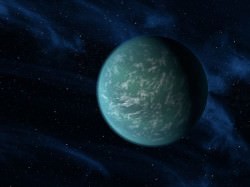
Because Kepler’s precision has been greatly reduced by the failure of a second reaction wheel earlier this year, it cannot accurately aim at large stars for the long periods of time required to identify the minute dips in brightness caused by the silhouetted specks of passing planets. But since white dwarfs — the dim remains of stars like our Sun — are much smaller, any eclipsing exoplanets would make a much more pronounced effect on their apparent luminosity.
In effect, exoplanets ranging from Earth- to Jupiter-size orbiting white dwarfs as close as .03 AU — well within their habitable zones — would significantly block their light, making Kepler’s diminished aim not so much of an issue.
“Given the eclipse signature of Earth-size and larger planets around WDs, the systematic errors due to the pointing problems is not the limiting factor for WDHZ observations,” the team assures in their paper “Habitable Planets Around White Dwarfs: an Alternate Mission for the Kepler Spacecraft.”
Even smaller orbiting objects could potentially be spotted in this fashion, they add… perhaps even as small as the Moon.
The team is proposing a 200-day-long survey of 10,000 known white dwarfs within the Sloan Digital Sky Survey (SDSS) area, and expects to find up to 100 exoplanet candidates as well as other “eclipsing short period stellar and sub-stellar companions.”
“If the history of exoplanet science has taught us anything, it is that planets are ubiquitous and they exist in the most unusual places, including very close to their host stars and even around pulsars… Currently there are no known planets around WDs, but we have never looked at a sufficient number of WDs at high cadence to find them through transit observations.”
– Kilic et al.
Read the team’s full report here, and learn more about the Kepler mission here.
NASA’s Ames Research Center made an open call for proposals regarding Kepler’s future operations on August 2. Today is the due date for submissions, which will undergo a review process until Nov. 1, 2013.
Added 9/4: For another take on this, check out Paul Gilster’s write-up on Centauri Dreams.